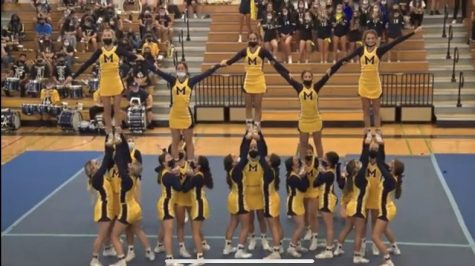The Jackie Robinson of Basketball: The Story of Perry Wallace
Jackie Robinson was the first African-American to play in Major League Baseball in 1947 for the Brooklyn Dodgers, breaking the color barrier in the sport. His story is well known, but there other pioneers in the world of sports not as well known. In the sport of College Basketball, the man who led to the integration of the SEC, the Southeastern Conference was named Perry Wallace.
Perry Eugene Wallace Jr. was born on February 19, 1948 in Nashville, Tennessee. He grew up in the segregated South and attended Pearl High School, an all black high school. There he excelled as a student and athlete. He became the valedictorian of his class, while playing basketball for his school’s team the Tigers, which won three consecutive State Championships.
Perry was recruited by many schools and could have chosen to leave the South to play College Basketball. But because he had been a serious student and wanted to become an engineer he choose Vanderbilt University where there were high academic expectations of the student athletes.
His head coach at Vanderbilt was named Roy Skinner. Coach Skinner was courteous and sincere to Perry and his parents. He “didn’t care what color they were if they could win.” Determined to achieve Perry joined the Commodores the University’s basketball team in 1966. He knew that going to Vanderbilt will be a challenge both on and off the court.
Perry faced many challenges integrating the SEC. It must have been very hard to be the first African-American Basketball Player in the SEC. Perry was generally welcomed by his white teammates on the court and in practice, but they did not socialize with him off the court.
He often said he was cheered at Memorial Gym where the Commodores played but largely ignored away from the arena. He along with his only other black teammate Godfrey Dillard felt isolated on the campus.
Things only got worse when Dillard had suffered a season ending injury before sophomore year leaving Wallace to play as the only black player on the team for his final three years of college.
The worse part for Perry was when the Commodores would play away games at schools where the fans were very hostile and very racist. Many of the these schools were in the deep South and had no black students at all.
The cheerleaders would lead the crowd in racist cheers. Often these fans would throw bottles or other objects at Perry while he was playing on the court. There had been many death threats against Perry’s life.
Once, at the University of Mississippi an opposing player hit Perry in the eye late in the first half. He had to leave the game for treatment and was taunted by the fans as he walked off the court bleeding. Although he came back in the second half to lead the Commodores on a 20-4 run that ended up becoming a 90-72 victory. The crowd was silent by Perry’s grace and ability. However some damage was done to Perry’s eyesight.
In spite of all of these challenges, Perry had a great college basketball career at Vanderbilt. As a senior, he was the team’s starting center and in his seventy eight games as a Commodore he averaged thirteen points and eleven rebounds.
In his final college game, Wallace chose to make two slam dunks, which were against the NCAA rules. Wallace did not agree with these rules as he believed they unfairly targeted the black basketball players. The referees chose to ignore this minor infraction, and Wallace ended his college career by performing well in his last game and taking a stand for something he believed in.
But most important to Perry and his parents, he graduated from Vanderbilt in 1970 with a degree in electrical engineering.
In 1970, he had been drafted in the fifth round of the NBA Draft by the Philadelphia 76ers. He had been cut during the preseason and he had never played in an NBA game. He then played for a season in Delaware playing for the Delaware Blue Bombers in the EBA (Eastern Basketball Association). But Perry Wallace’s life is about more than basketball.
Perry enjoyed the sport, but he always viewed basketball as his ticket to get a good education. Perry then decided to become an attorney and attended Columbia Law School.
At Columbia he studied for his law degree with other African-American colleagues who he had met at the University. One of them is Ms. Alfreida B. Kenny who is now an attorney in New York City.
Ms. Kenny highlighted Perry’s awareness of his importance in integrating the SEC. “ He was very aware of his role as a black man and as a basketball player. Everything he did as a ballplayer was a way to lead others. He knew he suffered,’ she said. She also pointed out the fact that “As a Black Southerner he felt obligation to help every black person. He was very aware of what he did to change things when he had been a basketball player and during his time at Columbia University”.
After he graduated from Columbia Law School in 1975, Perry moved to Washington D.C. where he worked for Walter Washington, the first African-American mayor in the District of Columbia and later at the Department of Justice.
But Perry Wallace made his greatest professional contribution off the basketball court as a law professor. He taught law at Howard University and at the University of Baltimore Law School and for most of his teaching career at the Washington College of Law at American University.
Perry Wallace died on December 1, 2017. But though the man is gone he leaves behind an incredible legacy. In 2003 he was inducted into the Tennessee Sports Hall of Fame and in 2008 in Vanderbilt’s Athletics Hall of Fame. In 2004 the University retired his jersey number.
But perhaps Perry Wallace’s greatest service was in the final years of his life as figure of racial understanding. As a young man Perry never liked to talk about what had happened to him. Yet as he became older at he began to open up and speak about that time in his life.
Perry described what he went through without anger or hatred. He was soft-spoken and did not allow his pain to turn him into a bitter person. Perry was a man of grace and understanding.
He often returned to Vanderbilt twenty years after he graduated to talk about his experiences as a player in the 1960’s. In telling his story, Perry’s humanity was what always stood out and he became a symbol at that University not only of its past but also its hopes for the future. Vanderbilt came to embrace its own Jackie Robinson as many people in the South and across the nation came to see how wrong they had been in the past.
Perry Wallace has been a role model and a hero not only to African-Americans but to everyone to not be afraid and to stand for the good of all people. Perry Wallace had experienced a lot in life as did Jackie Robinson. They all had one thing in common and that had been to stand up for their freedoms. Perry Wallace was a winner on the basketball court and in life and we are all better for his victories. Perry Wallace’s legacy carries on and it is going to carry on for a long time.




